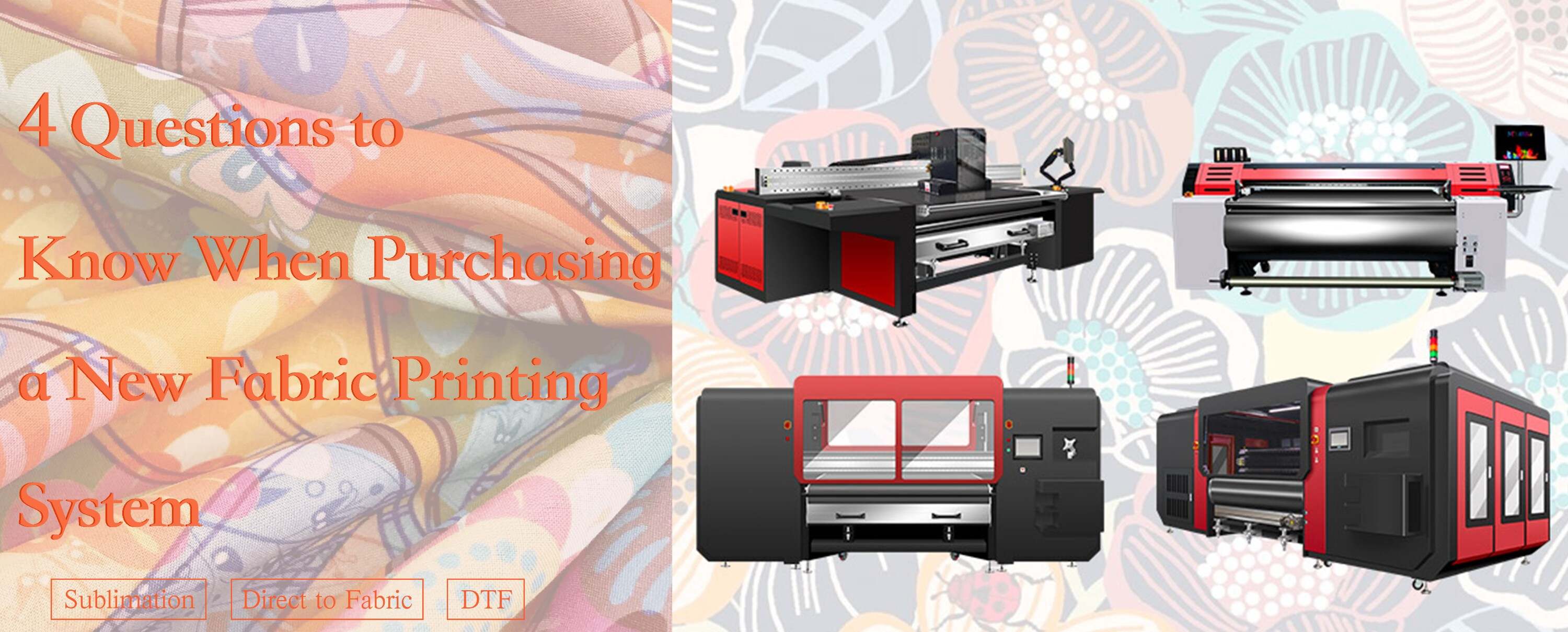Purchasing a new textile printing system may be a turning point for some businesses, such as switching from silk-screen printing to digital printing. It marks the beginning of new business or the expansion or maturing of our current business, enabling us to better adapt to the needs and expectations of our target audience, in order to provide them with better solutions and experiences.
However, with a variety of machines to choose from, finding one that satisfies us might be challenging. Therefore, we may need a specific checklist.
To help you choose the right product and achieve better results, we have provided four simple and straightforward questions for you to consider before you take action.
Question 1: Is the product flexible?
Flexibility is synonymous with business expansion, as it allows companies to undertake a broader range of work. The ability to expand the business and serve different types of customers is crucial. This question opens up meaningful exploration. That's why many fashion companies have begun significant transformation processes in recent years to increase flexibility.
But why do we need flexibility in textile printing?
As times change and people have more choices, we must understand what the new needs of shoppers and brands may be. Assessing market demand lets us know how many features our new machine system will include or add to our menu. Some brands may want small-scale, fast, short-term production, while others need rapid large-scale production. The printable designs and different fabric types are another factor in deciding flexibility. Finally, the ability to produce all products on demand is the ultimate feature of flexibility, as it gives us the opportunity to serve customers immediately and avoids the hassle of costly inventory management.
Question 2: Is it cost-effective?
Another factor influencing our business expansion is cost-effectiveness. Maximizing opportunities to drive our business can only be achieved by understanding the cost to each customer and focusing on reducing those costs without sacrificing market demand. We understand that, in today's economic environment, fashion and retail companies are striving to reduce costs.
What factors affect our costs when purchasing a new fabric printing machine?
First, there's the installation and training. The longer we spend training existing staff, or hiring and teaching new employees to use the new machine, the later we can profit. Labor issues continue to affect cost when assessing the number of operators needed to complete the job.
Second, there's machine maintenance. Once the machine stops working, our production line is affected. Timely diagnosis of faults and prevention of problems through advanced control interfaces and preventative maintenance becomes crucial.
Next, rework is an area we need to explore. We should adopt automated processes to reduce human errors and ensure accuracy. A machine capable of producing high-quality prints helps avoid costly rework, which can lead to production delays.
Finally, understanding how and if the new machine can save space, materials, and costs is also essential. For example, printing multiple fabrics with one machine can save space; on-demand production helps reduce waste of expensive materials; choosing energy-efficient machines effectively lowers energy expenses.
Question 3: What are the effects of the ink used and on the environment?
Although digital printing has brought convenience, the environmental issues it causes remain an ongoing research subject. Digital printing typically uses dye-sublimation inks, acid dyes, and pigment inks. Different machines produce various effects and impacts. Dye-sublimation printers can create bright, clear, wash-resistant, and fade-resistant patterns without excess ink or wastewater, making them more eco-friendly. Direct printing machines can print on various fabric types and allow more personalized customization and design, but require a lot of water and chemicals to treat and fix patterns, thus impacting the environment. When choosing a new machine, we should not only consider whether it wastes more resources but also whether it is certified for sustainable development and meets national standards.
Question 4: Does it offer additional service value?
After purchasing a machine, is there comprehensive after-sales service? If problems and needs arise, can support be obtained?
Most of MT's services are not physical, but we can still support the entire printing process from a holistic perspective. Our customer service is online 24/7 without time zone issues, and we also provide overseas offline guidance. We offer free sampling services, and we can promptly fulfill any fabric sample requests.
MT products can provide you with the production data of the machine, test each step of the machine's printing, and provide comprehensive solutions to enhance cost-effectiveness. Our machines will continue to evolve and update, moving into the future with you.
To choose the machine that best fits your business needs, you need to consult and research these topics. We also suggest seeking professional advice to determine which machine meets your goals. For example, if you want to enter the home textiles market, Belt-i3200Plus is an ideal choice.
We welcome you to ask questions of MT's experts and watch our exciting machine demonstrations. We will help you obtain all the information needed to purchase the machine of your choice.





